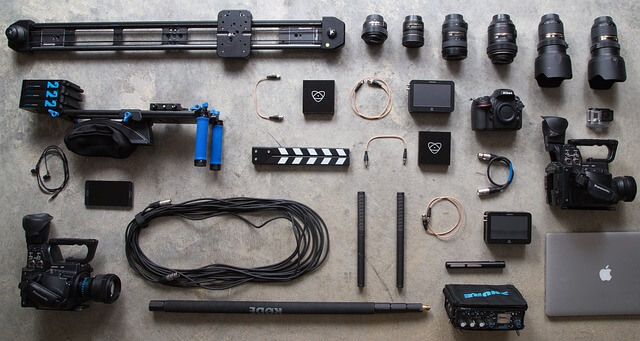Are you looking for help optimizing your YouTube channel? This YouTube SEO guide is the first place to look to get started!
Optimization Guide Overview
Everyone knows that Google dominates the world of search marketing. After all, whenever we need an answer, we say “just Google it”. It may not come as a surprise that the #2 search engine in the world happens to be YouTube, right behind its parent company Google. Both Google and YouTube are the most used search engines on the planet. In other words, YouTube SEO is incredibly important!
Video is the future of marketing, and no website or app that uses video is quite as powerful as YouTube. If you are going to enter the ranks of YouTubers and try to market through video on this particular platform, you’re going to need to learn how to optimize for the social media site. This YouTube SEO guide will give you basic insight into what you need to do to get your video to the top of the search results.
Top YouTube Ranking Factors
Like all search engines, YouTube uses an algorithm to determine which videos it showcases first deemed most valuable for the audience. To improve your chances in ranking first, these are the key determining factors that the algorithm identifies:
- Watch time – How long do your guests watch your YouTube videos
- Channel authority – Is your YouTube channel branded as an authority on your topic?
- Positive sentiment and engagement – Do viewers comment and like your video? Do they give it a thumbs up?
- Keywords – Do the keywords match YouTube search terms and do they match across the title, tags, and description?
While you have a measure of control over some of these, the factors you can control most are the titles, descriptions, tags, and keywords. As a great first step, here’s a closer look at how you can optimize those items to grow your audience through organic search.
Start with Keywords
 One of the most important parts of your optimization strategy will be your keywords. Perform extensive keyword research to determine the most effective keywords for your project. Keep in mind getting started that you want keywords with low competition.
One of the most important parts of your optimization strategy will be your keywords. Perform extensive keyword research to determine the most effective keywords for your project. Keep in mind getting started that you want keywords with low competition.
One of the most effective ways to find creative keywords in your niche is to check the video tags on some of the top ranking YouTube videos. Search a keyword you consider relevant to your audience, and find videos on it on the first page of the results. Then, look at their tags, using those tags as your keyword list.
Once you have a list of keywords, search them on YouTube, clicking the “about results” link. This will show you how many results are showing for that keyword. Experiment until you find keywords that have low competition but are still in line with your niche topic.
Keep in mind that on YouTube, exact match keywords are not always required. The site will return results for broad match keywords as well as an exact match. In fact, only about 40% of YouTube videos rank with exact match keywords in their titles. A broad match keyword is one that has some of the words in the search phrase, but not necessarily the exact phrase. Thus, you will need to have longer keyword phrases for more of a chance of hitting those broad keyword results.
Tips for YouTube Titles
The video titles you use really matter. This is true for your audience but also YouTube’s search engine. They need to be catchy enough to grab the viewer’s attention, engaging enough to make them want to click, and keyword rich enough to impress the search engine algorithm. Keyword use is extremely important, because over 90% of results will include at least a portion of the searcher’s keyword phrase in the title.
Short and succinct titles are also important. The best length for a YouTube video title is 100 characters. The title needs to contain key phrases from your keyword research, location if applicable to your video, and any important names of people highlighted in the video.
Optimize Your Video Description
Next, write your description. The description gives you more room, so you can incorporate more of your keywords. Start your description with a relevant URL, ideally to your website, so viewers can find more information about what your video topic is. Then, in the opening sentences of the description, incorporate your most important keywords.
Remember, only a portion of the description is visible to the audience without clicking the “see more” tab. Your description should be around 250 words, but the keywords need to be close to the beginning. Keep in mind that the description needs to read naturally. Do not sacrifice clarity for keywords.
Use Tags
Adding tags to your video gives the YouTube search bots more information to comb through. This is an easy way to add additional keywords and key phrases to the video without stuffing the description or title too full. You can add between 10 and 20 key phrases as tags. Be creative to consider other search terms that may apply to your video.
Thumbnails Matter
A huge influencing factor in video clicks and views is the video thumbnail. They say don’t judge a book by its cover, but many people do judge a YouTube video by its thumbnail image. You can have excellent, relevant video content, but if your thumbnail is unappealing, irrelevant, or inaccurate, you will be less likely to get a view. In order for your video content to get picked over a competitor’s, make sure your thumbnail offers a clear title and an enticing call-to-action that allows viewers to know exactly what the video is about. Most social media platforms encourage a short attention span, be sure to capture an audience before and after the first click.
General YouTube SEO Tips
After you’ve tackled your top ranking factors, what else can you do to ensure your video ranks well and you continue to gain subscribers? Here are some general tips to help with your YouTube SEO:
- Use descriptive playlists – If you’re setting up a full YouTube channel (and you should), use that channel to organize playlists. Playlists should be grouped based on topics, and the descriptions of the playlists should be rich in keywords for the search engine. This will help boost your YouTube SEO.
- Dip into annotations – The key to SEO on a video based site is as much text as possible, and annotations within your video give you additional places to add text. Annotation options include spotlights, titles, notes, speech bubbles, labels, and a pause button. Annotations also encourage engagement and keep subscribers, which further helps your SEO.
- Keep your page properly branded – Because YouTube SEO focuses on video watch length and traffic as well as keywords, branding is helpful. Keep your YouTube channel branded in line with your overall marketing plan, so visitors know where they are and why they are there.
- Link to your channel – Finally, remember that off-site links always help with SEO, even on YouTube. Look for opportunities to link to your videos or your YouTube channel to boost them to the top of the search results.




